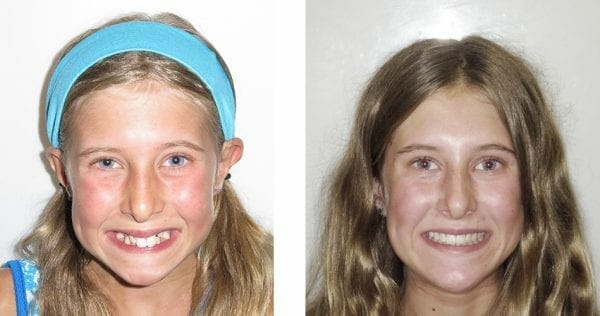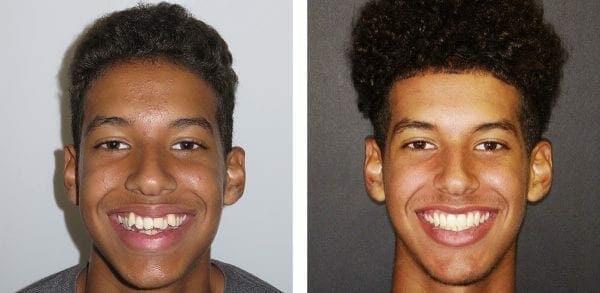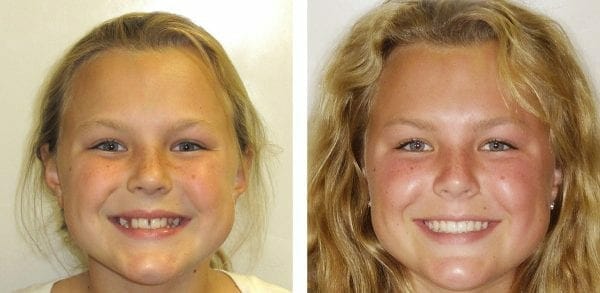Why Age 7 Is the Magic Number for Your Child’s First Orthodontic Visit
Outgrowing Myths
Ask ten parents when a child should see an orthodontist and you may get ten different answers:
- “Middle school—after all the baby teeth are gone.”
- “High school, when they’re ready for braces in yearbook photos.”
- “Only if the dentist spots a problem.”
While well-intentioned, these answers overlook an important fact: facial growth does not pause until the teenage years. In fact, the American Association of Orthodontists (AAO) recommends that every child receive an orthodontic evaluation no later than age 7.
At Burke & Redford Orthodontists, Dr. Ryan Redford and Dr. Michael Burke have spent more than three decades guiding young smiles in Temecula, Lake Elsinore, Murrieta, and the Inland Valley surrounding communities. We offer growth checks precisely because we know early insight often prevents bigger problems—and bigger bills—later.

Six Common Myths About Early Orthodontic Care
| Myth | Reality |
| 1. “Baby teeth don’t matter.” | Primary teeth guide the eruption path of permanent teeth and maintain arch length. Premature loss or severe decay can set the stage for crowding and bite problems. |
| 2. “Kids will outgrow a crooked bite.” | While some spacing does self-correct, growth can also magnify discrepancies, especially crossbites and jaw asymmetries. |
| 3. “Wait until all permanent teeth are in.” | By ages 11–13, much facial growth is complete, limiting non-surgical options for severe underbites and crossbites. |
| 4. “Braces before age 12 are unnecessary.” | Phase I treatment can shorten (or eliminate) Phase II braces, reduce extractions, and protect protruding incisors from trauma. |
| 5. “Early treatment costs more.” | Intervention can avert expensive surgery, reduce time in full braces, and decrease the invasiveness of later treatment. |
| 6. “My dentist will tell me if we need an orthodontist.” | General dentists excel at cavities and cleanings, but orthodontists spend years studying growth patterns and facial harmony. A free consult never hurts and can often reveal issues not seen by the dentist. |
The Science Behind “Seven”
- Rapid Skeletal Change
Between ages 6 and 9, upper-jaw sutures remain pliable. This window allows gentle palatal expansion to correct a crossbite or make room for erupting incisors—often in a matter of months.
- Mixed Dentition Snapshot
At 7, children usually have four permanent molars and four permanent incisors. These “guideposts” give orthodontists a reliable preview of crowding, spacing, or bite imbalance.
- Airway & Breathing Assessment
Enlarged adenoids, mouth-breathing, or a constricted airway can influence jaw direction. If any problems are present, we can refer the child to the appropriate physician for management.
- Habit Intervention
Thumb sucking, tongue thrusting, and nail biting can push front teeth outward and affect speech. Interceptive appliances—placed well before teenage peer pressure kicks in—curb these habits and redirect growth.

What Happens at a Complimentary Growth Check?
- Friendly Tour & Photos
- Kids meet our team, see the “big camera,” and feel at ease.
- Digital photos document bite, smile, and facial profile.
- Low-Dose Panoramic X-ray or Targeted CBCT
- Reveals missing, extra, or impacted teeth.
- Shows root alignment and jaw relationships in three dimensions.
- Redford or Dr. Burke Exam
- Checks erupting teeth, oral habits, jaw shifts, and symmetry.
- Estimates growth potential.
- Parent Consultation
- Clear explanation of findings—no jargon.
- One of three recommendations:
- “Everything looks good—let’s monitor once a year.”
- “Let’s start a simple Phase I appliance to guide growth.”
- “We see a concern that needs coordinated care (ENT, speech, etc.).”

Early-Stage Tools in Our Temecula & Lake Elsinore Offices
Custom appliances are planned and fabricated with the help of our Planmeca ProMax® 3-D CBCT and iTero® digital impression systems for accurate diagnosis and precise, comfortable fit.
Gently widen a narrow upper jaw, correcting crossbites and freeing space for erupting canines.
Deliver flexible, light forces—ideal for mild expansion or retention after other expansion devices.
Maintain molar position when baby molars fall out early, preventing future crowding and saving critical “leeway space”.
Stop thumb sucking or tongue thrust without scolding or reminding—behavioral changes through design.
Align erupting incisors, close traumatic gaps, and reduce risk of chipped front teeth.
- Invisalign® First
Clear aligners designed for mixed dentition—expand arches, align front teeth, and build hygiene habits.

Example Orthodontic Cases
Ethan, Age 8 – Crossbite Correction
Orthodontic records showed Ethan’s upper arch 4 mm narrower than his lower. A bonded expander achieved ideal width in four months; Phase II braces finished at age 13 in just 18 months—no extractions needed.
Luna, Age 7 – Severe Overjet (Buck Teeth)
Luna’s upper incisors protruded 7 mm, putting them at high trauma risk. A short Phase I with relatively inexpensive removable type retainer retracted the front teeth to a better position; two months later she tripped at recess—front teeth intact!
Mateo, Age 9 – Mouth-Breathing & Snoring
Airway analysis revealed enlarged adenoids. ENT removal plus rapid palatal expansion improved breathing; teachers reported improved focus, and his parents said the snoring was eliminated.
FAQs Parents Ask at Age 7 Orthodontic Consultations
If you start now, won’t my child need braces twice?
Phase I aims to correct skeletal or functional problems early. Some children finish Phase I and need only retainers or a short aligner touch-up later. Many patients do require comprehensive braces later.
Isn’t radiation exposure a concern?
Our ultra-low CBCT protocols equal roughly one trans-Atlantic flight. In many cases it replaces multiple traditional X-rays. CBCT images are not taken as a screening film on all patients – only if there is a specific indication for one (Ie. impacted canines that may harm the roots of adjacent permanent front teeth)
What if my child isn’t ready emotionally?
Most early appliances are fixed (no compliance required). We use kid-friendly language, rewards, and short visits to build confidence.
The Burke & Redford Difference
- Board-Certified Expertise — Dr. Redford (ABO diplomate with 10+ years’ experience) and Dr. Burke (ABO diplomate with 30+ years’ experience).
- Kid-Centric Design — Fun atmosphere, gentle and experienced clinical assistants.
- Leading Technology — Self-ligating clear and metal braces, Damon braces, Invisalign, growth modification appliances.
- Flexible Financing — $0 down and 0% interest (for patients who qualify), and PPO insurance maximization.
- Community Commitment — Sponsorships with local schools, little leagues, soccer leagues, etc.
Ready for Your Child’s Free Growth Check?
The myths are gone, the science is clear, and the AAO agrees age 7 is the magic number to set young smiles on the right path. A consultation today can save years of regret tomorrow.
📞 Call Burke & Redford Orthodontists at (951) 699-8011
🌐 Or request an appointment through our website anytime.
Let’s guide growth—together—so your child can bite, speak, and smile with confidence for life.